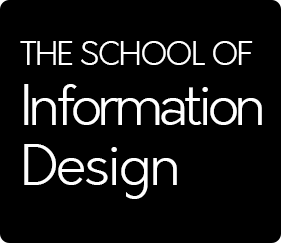What is Information Design?
One of the world's fastest-growing careers . . . that you haven't heard of
The phrase "Information Design" clearly suggests its purpose—designing how information is presented—but many struggle to grasp what this entails in practice. The field exists at the crossroads of data visualization, user experience, and storytelling, transforming raw information into something meaningful and actionable.
We are at a time unmatched by the accelerative force of technological aid to all occupations. At the birth of industrialism and more than a century thereafter, we became gradually used for technological assistance being injected into physical labor and manual tasks.
However, the explosion of ML/AI-enabled work happened in a mere instance - relatively speaking. People have been left with their heads spinning as to whether their occupation is under threat of replacement by a cheaper automation or AI-enabled workflow. Companies fade as quickly as they were sparked, as fast-paced competition within all industries begets the technological advancements made even months before.
We are at a time unmatched by the accelerative force of technological aid to all occupations. At the birth of industrialism and more than a century thereafter, we became gradually used for technological assistance being injected into physical labor and manual tasks.
However, the explosion of ML/AI-enabled work happened in a mere instance - relatively speaking. People have been left with their heads spinning as to whether their occupation is under threat of replacement by a cheaper automation or AI-enabled workflow. Companies fade as quickly as they were sparked, as fast-paced competition within all industries begets the technological advancements made even months before.

In this uncertain time, technical trades within the fields of GIS, data analytics, and architecture have seen massive transformations as mechanical elements of the work get approached from the angle of automation.
Information Design's Role
Information design is evident when you see smooth user interaction with data. It involves a blend of graphic design principles, data visualization, and user experience. When you come across a data display that conveys a lot of information without relying on dense text or lengthy explanations, you are experiencing effective information design.
The data transfer is efficient.
Information Design: Past vs. Present
Information Design ensures that data doesn’t just exist—it communicates. It’s what makes data accessible, intuitive, and insightful. When done well, it allows users to extract meaning at a glance without wading through dense reports or raw datasets.
In the past, businesses poured massive resources into simply collecting and storing data. Analysts played a crucial role in identifying patterns and extracting insights. But now, as automation handles much of that process, a new challenge emerges: how do we ensure data is useful for real-world decisions?
Information Design's Role
Information design is evident when you see smooth user interaction with data. It involves a blend of graphic design principles, data visualization, and user experience. When you come across a data display that conveys a lot of information without relying on dense text or lengthy explanations, you are experiencing effective information design.
The data transfer is efficient.
Information Design: Past vs. Present
Information Design ensures that data doesn’t just exist—it communicates. It’s what makes data accessible, intuitive, and insightful. When done well, it allows users to extract meaning at a glance without wading through dense reports or raw datasets.
In the past, businesses poured massive resources into simply collecting and storing data. Analysts played a crucial role in identifying patterns and extracting insights. But now, as automation handles much of that process, a new challenge emerges: how do we ensure data is useful for real-world decisions?

The Table Metaphor: Why Presentation Matters
Consider the function of a table. At its most basic level, a table is just a flat surface with legs, supporting weight above the ground. If I were tasked with building a table as quickly and cheaply as possible, I could throw together a slab of wood, four legs, and screws.
It would function—but barely. This table's surface isn't sanded, its corners aren't rounded, and it does not have a finish to prevent splintering or decay. The rough edges might cause splinters, its stability might be questionable, and its aesthetics would make it uninviting. The table technically exists, but it fails to serve its full potential.
Consider the function of a table. At its most basic level, a table is just a flat surface with legs, supporting weight above the ground. If I were tasked with building a table as quickly and cheaply as possible, I could throw together a slab of wood, four legs, and screws.
It would function—but barely. This table's surface isn't sanded, its corners aren't rounded, and it does not have a finish to prevent splintering or decay. The rough edges might cause splinters, its stability might be questionable, and its aesthetics would make it uninviting. The table technically exists, but it fails to serve its full potential.

In contrast, a well-thought-out structure can serve as the foundation for gatherings, a nourishing meal, and creative projects, shaping impressions within the home. Smooth surfaces, rounded edges, and a polished finish, will provide comfort, utility, and longevity. This table isn't just a piece of furniture—it invites interaction. It sets the stage for family meals, creative work, business discussions, and shared experiences.

Data is the same way.
Raw, unprocessed data—no matter how powerful—has limited value unless it's structured and designed for interaction. Data engineering builds the table’s foundation, but Information Design makes it usable.
When only data engineers are assigned to the tasks associated with a company's data, we may get the structure built, but it will likely be built without the human-interaction component in mind. It is not the fault of the engineer, scientist, or analyst who is composing the materials in the mechanical fashion that is being asked, but if we don’t start understanding data to be a medium that is like a material that needs to be managed for the users it has in mind, we will continue to limit the interactions that can be had with our data.
Raw, unprocessed data—no matter how powerful—has limited value unless it's structured and designed for interaction. Data engineering builds the table’s foundation, but Information Design makes it usable.
When only data engineers are assigned to the tasks associated with a company's data, we may get the structure built, but it will likely be built without the human-interaction component in mind. It is not the fault of the engineer, scientist, or analyst who is composing the materials in the mechanical fashion that is being asked, but if we don’t start understanding data to be a medium that is like a material that needs to be managed for the users it has in mind, we will continue to limit the interactions that can be had with our data.

The improved aesthetic is a symptom, not the cause of this increased attention to design. As we can see in this example of a table, the job of an information designer is to take the user and employ the theory of mind to determine the properties of the table to enhance and expand the possible experiences while using it.
A table can be THE unifying element of an entire house. This is where conversations are prompted amongst families, important decisions are made between business partners, and profound
The form of the table is what sets the context of approachability and usability.
A table can be THE unifying element of an entire house. This is where conversations are prompted amongst families, important decisions are made between business partners, and profound
The form of the table is what sets the context of approachability and usability.

The AI Factor: Mass Production vs. Craftsmanship
Extending this analogy further, let’s compare AI-driven automation to industrial mass production.
Before the Industrial Revolution, craftsmen built products in small batches, prioritizing quality over quantity. As factories emerged, production scaled dramatically, and soon, efficiency outpaced craftsmanship. While mass production made goods more accessible, it often sacrificed longevity and personalization.
Data has gone through a similar transformation:
Extending this analogy further, let’s compare AI-driven automation to industrial mass production.
Before the Industrial Revolution, craftsmen built products in small batches, prioritizing quality over quantity. As factories emerged, production scaled dramatically, and soon, efficiency outpaced craftsmanship. While mass production made goods more accessible, it often sacrificed longevity and personalization.
Data has gone through a similar transformation:
- Early computing (Craftsman Era) – Data was analyzed manually in small-scale projects, requiring expertise and effort.
- Automation & AI (Mass Production Era) – AI and machine learning now generate reports, dashboards, and visualizations at an unprecedented rate, but often lack human nuance and contextual awareness.
- Information Design (Quality Craftsmanship) – The next step is ensuring that AI-generated outputs are refined, meaningful, and built to last. It’s not just about speed but about strategic, user-centered communication.
ARPIL, 2 / 2025
Contact us with any convenient way:
E-mail: hello@company.com
Phone: +123 466 567 78
Social networks: Facebook | Instagram | Youtube
E-mail: hello@company.com
Phone: +123 466 567 78
Social networks: Facebook | Instagram | Youtube
© All Right Reserved. My company Inc.
e-mail us: hello@company.cc

